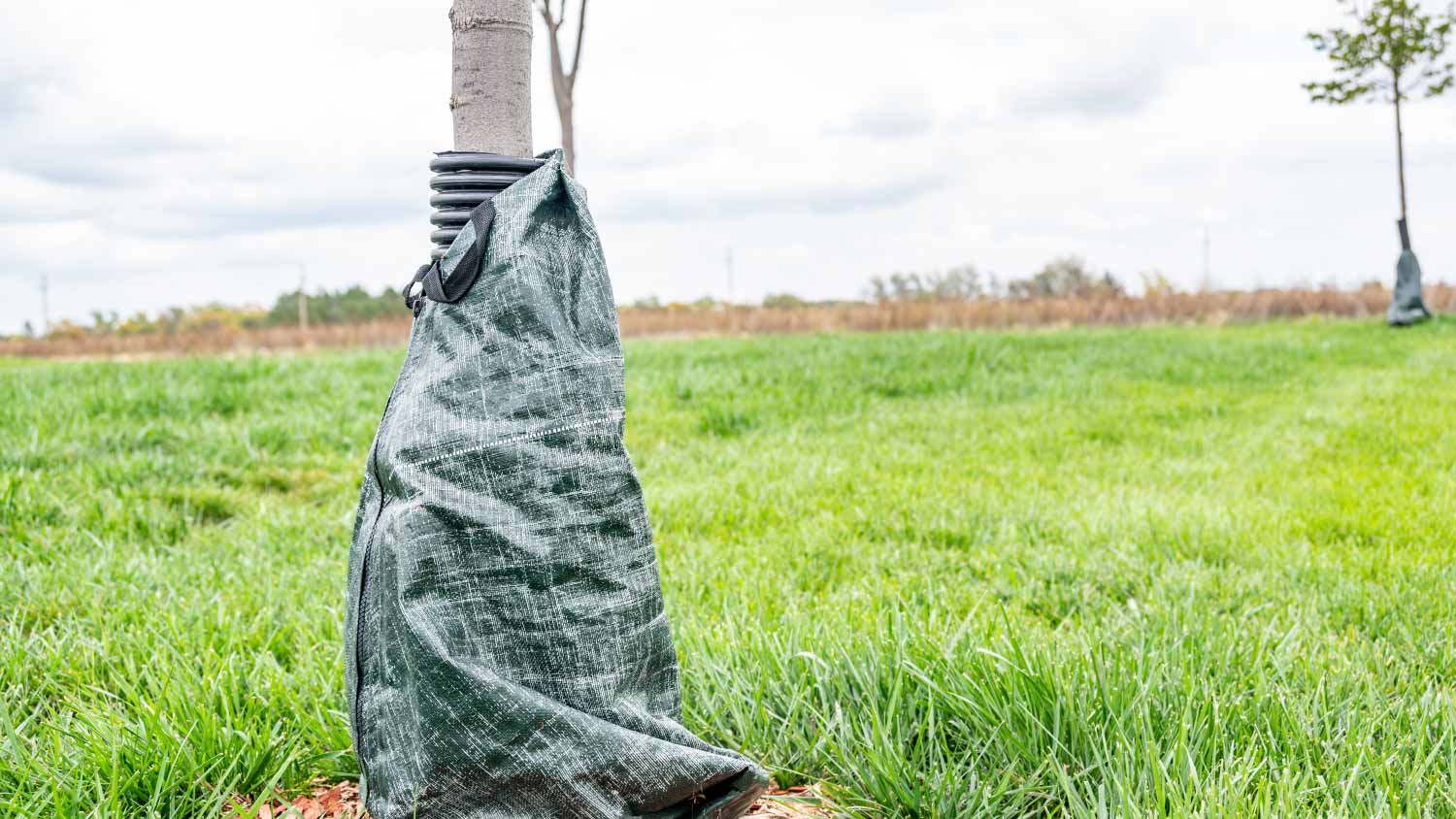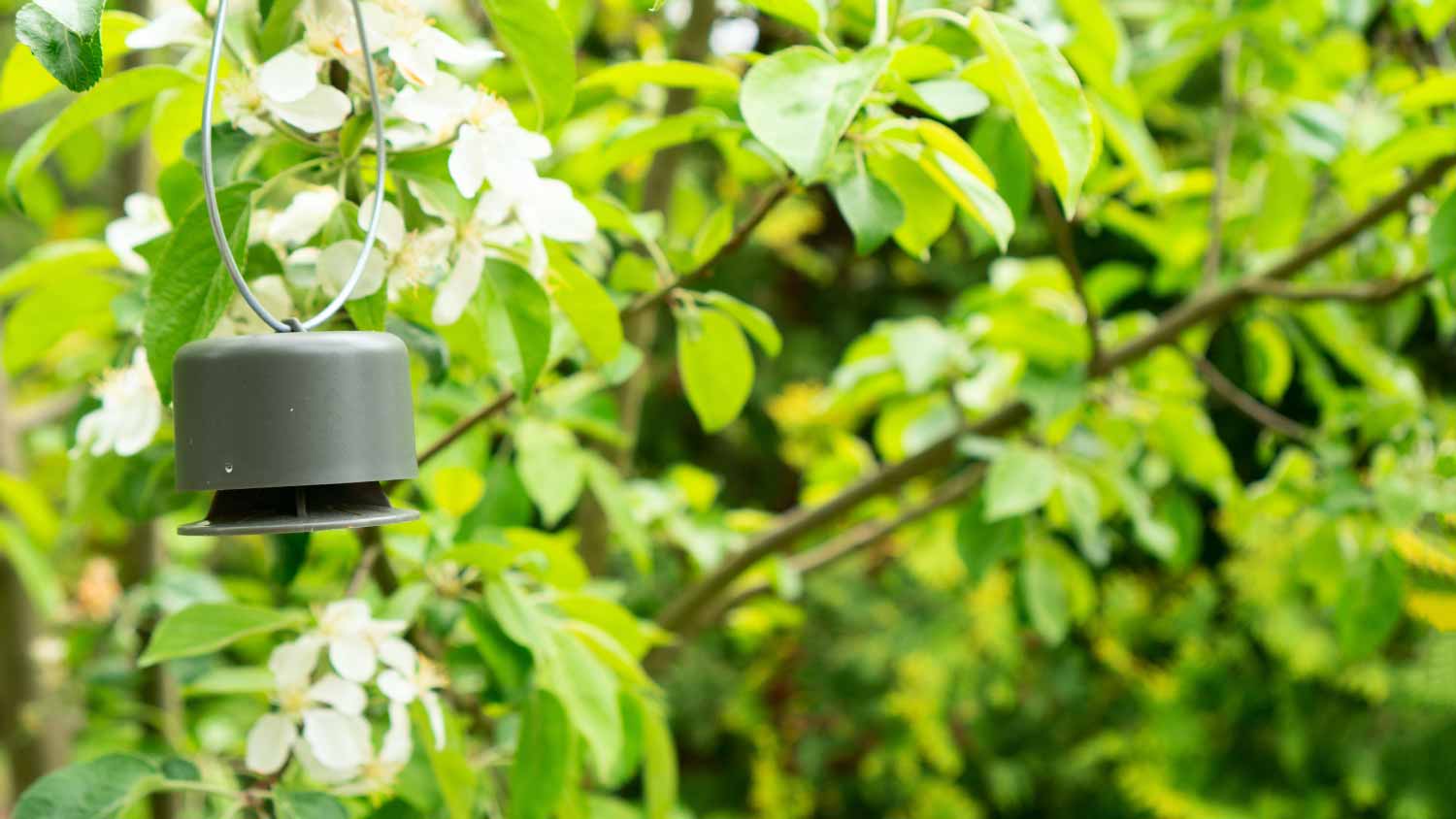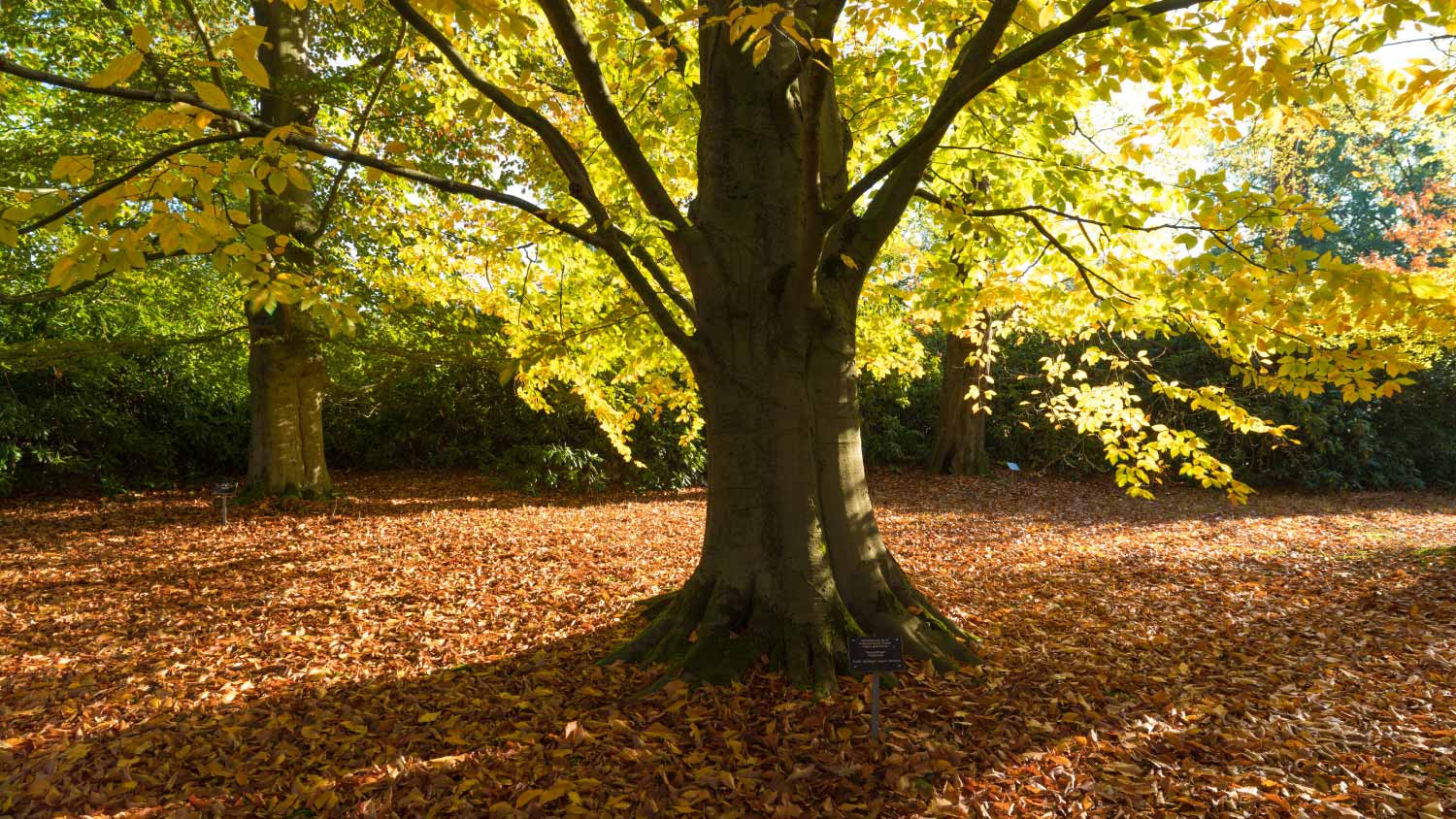
Trimming your bushes is one of the less costly aspects of landscaping, and it’s helpful to bundle many trimming services together to save money.
A deer in your yard may not always be a welcome sight


Planting new trees takes a lot of time and effort, so the last thing you want to happen is a deer trekking through your yard and eating or damaging them. However, you can easily prevent this by putting one or more tree protection methods in place. We’ll outline several methods to teach you how to protect trees from deer, as well as help you spot signs that your trees may have deer-related damage.

Protecting the trunk of a tree restricts access to deer looking to rub their antlers on the wood. You can install paper or plastic tree wrap around the base of a tree to keep the deer away, or you can install a tree tube around the trunk.
Choose from plastic tubes specifically made for tree protection or corrugated black drainage pipes. You will likely need some kind of string or cord to hold the pipe in place. Be sure to replace the wrapping every few months, so moisture or insects do not build up inside.
Keeping deer out of your garden or away from your trees can be as simple as installing a fence. You can install the fence in a circle around each tree or groupings of trees or install a fence around the entire perimeter of your property.
Fences directly around trees should be at least 6 feet tall, while fences around your property should be at least 8 feet tall to keep running deer out. You can make the fence from any type of residential fencing, such as wood, metal, or plastic. Small fences around trees can be made with wooden stakes and metal cages or chicken wire. A local fence company can give you some expert guidance if you let them know that your aim is to keep deer away.

Consider spraying the base of your trees with a deer repellent for deer rutting tree protection. These types of repellents are available at most local hardware stores.
The sprayed product has a smell and taste that is unappealing to deer, but you will have to keep up with applying it in order for it to be effective. Spray your trees at night time right before deer are active, and consider using deer repellent in conjunction with another protective measure.
Deer may initially be attracted to another plant around your trees that lures them in. Avoid planting certain types of plants that attract deer, like sunflowers, petunias, hydrangeas, daylilies, clematis, or clovers. If you prefer to have these plants in your yard, plant them far away from any vulnerable trees to lower the likelihood the deer will travel to each location.
Just like you’ll want to avoid adding in some plants that deer can’t get enough of, you may want to consider planting some blossoms that deer can’t stand. Some of the most popular deer-resistant or -repelling plants include:
Autumn crocus
Bee balm
Boxwoods
Foxglove
Juniper
Lilac
Rosemary

If you are having difficulty keeping deer away from your trees, consider planting deer-resistant trees to avoid the problem in the first place. Certain types of trees do not have an appealing taste to deer, or the bark is too brittle to take the velvet off of their antlers.
Deer-resistant trees include:
American beech
River birch
D.D Blanchard Southern magnolia
Bald cypress
Mimosa tree
If you live in a deer-ridden area, it is important to inspect trees, especially recently planted trees, for signs of deer damage. Such signs include:
Peeling bark: Deer will use their antlers to rub bark off the trunk and branches of a tree. Male deers often do this to rub the velvet off of their antlers.
Broken branches: While rubbing their antlers on a tree, smaller branches may break and fall to the ground.
Chewed branches: Deer may chew at branches on a tree. The bark on young trees has a flavor that many deer find yummy.
Piles of soil: Deer may dig up soil near the base of a tree while rubbing their antlers on the tree. They may also attempt to dig up the tree roots for a fresh taste.
Once a tree has been damaged by deer, it will have difficulty surviving. Male deer will rub their antlers against tree bark, especially during mating season, to get rid of the velvet on their antlers. After being visited by a deer, the bark may begin to wear off the tree, creating an entry point for pests.
The insects will cut off the supply of nutrients from the roots to the rest of the tree and can also bring in diseases. These issues will eventually cause the tree to die. To keep trees healthy and long-living, it is important to protect them from any damage by deer paying your yard a visit.
You have several options for keeping deer out of your garden. For starters, there are many plants that naturally repel deer and can add a lot to the quality of your life, such as aromatic herbs like thyme, sage, and dill, or perennial flowers like daffodils.
If you don’t want to go to the trouble of planting and maintaining such greenage, you can simply spritz the essential oils of peppermint, rosemary, or fennel onto what you already have. These organic solutions will make your garden smell great and keep deer out of the way without harming them.
If you’ve tried fixes like these and find that they aren’t enough to deter deer, installing deer fencing will deliver guaranteed results. Though it requires more work and a larger budget, you won’t regret the extra sweat and expense if woodland critters are a frequent problem for you.
Most of the tree protection measures described above are simple DIY projects. You can visit your local hardware store to purchase the necessary materials, whether metal cages for fencing, tree protection wrap, deer repellant, etc.
It’s important to keep up with the maintenance of deer protection, so inspect and repair barriers often. If a deer does damage your new tree, the cost to plant a new tree is anywhere from $100 to $2,000, so it’s better to be safe than sorry.
If you have many trees on your property that require protection, it may be worth your time and money to hire a professional to install protective barriers. The cost of a landscaper is between $50 and $100 per hour, depending on the difficulty of the task.
Wildlife removal costs anywhere between $190 and $615, depending on the animals you’re trying to remove, how long they’ve infested your home, and the extent of the damage they have caused. Thankfully, most of the strategies to keep them at bay yourself can be relatively cheap and easy to install.
Ultimately, deer are part of the ecosystem in which we live. While you should definitely have some strategies to mitigate the damage done to your property, it’s important to remember you’re sharing the land they live on, so be respectful and humane in your approach.
From average costs to expert advice, get all the answers you need to get your job done.

Trimming your bushes is one of the less costly aspects of landscaping, and it’s helpful to bundle many trimming services together to save money.

Find out how much it costs to plant a tree based on the number of trees, their size, where you want to plant them, and DIY versus professional costs.

The cost of tree stump removal depends on size, removal method, location, and more. Our guide will show you how much stump removal costs.

Learn how to move a palm tree while avoiding irreparable damage. Using these steps to transfer a palm tree to a new spot.

Palm tree stumps can be an eyesore and may even attract pests. Learn the four methods for palm tree stump removal in this DIY guide.

Trimming shrubs and bushes takes time, patience, and a little sweat equity. Our guide will show you how to trim shrubs and bushes properly.